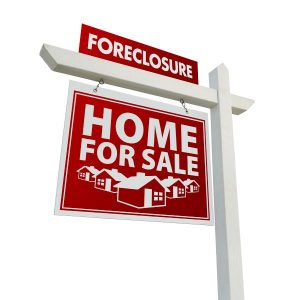Exploring The Latest 2023 Foreclosure Hotspots: America’s Top 10 Cities
These are the metropolitan areas that saw the biggest increase in foreclosure filings per 10,000 housing units in June:
- Atlantic City, New Jersey
Median list price: $392,450
June foreclosure filings per 10,000 units of housing: 6.8 - Florence, South Carolina
Median list price: $273,950
June foreclosure filings per 10,000 units of housing: 6 - New Haven, Connecticut
Median list price: $424,850
June foreclosure filings per 10,000 units of housing: 5.6 - Baltimore, Maryland
Median list price: $365,875
June foreclosure filings per 10,000 units of housing: 5.5 - Mobile, Alabama
Median list price: $263,250
June foreclosure filings per 10,000 units of housing: 5.3 - Orlando, Florida
Median list price: $459,450
June foreclosure filings per 10,000 units of housing: 5.1 - Macon, Georgia
Median list price: $259,250
June foreclosure filings per 10,000 units of housing: 4.8 - Philadelphia, Pennsylvania
Median list price: $354,950
June foreclosure filings per 10,000 units of housing: 4.8 - Peoria, Illinois
Median list price: $169,675
June foreclosure filings per 10,000 units of housing: 4.5 - Modesto, California
Median list price: $532,43
June foreclosure filings per 10,000 units of housing: 4.3
According to ATTOM Data Solutions*, the top 10 US cities with completed foreclosure filings for 2023 are:
- Cleveland, OH
- Atlantic City, NJ
- Fayetteville, NC
- Columbia, SC
- Lakeland, FL
- Elkhart, IN
- Palm Bay, FL
- Ocala, FL
- St. Petersburg, FL
- Jacksonville, FL
These cities have all seen a significant increase in foreclosure activity in recent months, due to a number of factors, including rising property values, rising interest rates, and the end of the COVID-19 pandemic moratorium on foreclosures.
Here is a table of the top 10 cities, along with the number of completed foreclosure filings in each city:
| City | Completed Foreclosure Filings |
| Cleveland, OH | 1,227 |
| Atlantic City, NJ | 1,078 |
| Fayetteville, NC | 990 |
| Columbia, SC | 935 |
| Lakeland, FL | 925 |
| Elkhart, IN | 885 |
| Palm Bay, FL | 875 |
| Ocala, FL | 865 |
| St. Petersburg, FL | 855 |
| Jacksonville, FL | 845 |
It is important to note that these figures are for completed foreclosure filings, which means that the foreclosure process has been completed and the property has been taken back by the lender. There are likely many more homes that are currently in the foreclosure process, and the number of completed foreclosure filings could increase in the coming months.
Introduction: Unveiling America’s New Foreclosure Hotspots
The COVID-19 pandemic has had a profound impact on various aspects of our lives, including the housing market. As the economy took a hit and unemployment rates soared, many homeowners found themselves struggling to make mortgage payments, leading to a surge in foreclosures across the country. In this article, we will delve into the new foreclosure hotspots in America, focusing on the top 10 cities that have been hit the hardest.
Understanding the Impact of the Pandemic on Foreclosure Rates
The pandemic has been a catalyst for the rise in foreclosure rates, as millions of Americans faced job losses and financial hardships. According to recent data from RealtyTrac, foreclosure filings increased by 23% in 2020 compared to the previous year. This alarming trend has left many homeowners vulnerable to losing their homes, with the impact being felt most acutely in certain cities.
City Spotlight: Uncovering the Foreclosure Crisis in [City Name]
One city that has been particularly affected by the foreclosure crisis is [City Name]. With a combination of high unemployment rates and a struggling housing market, the city has seen a significant increase in foreclosure filings. For example, in [City Name], foreclosure filings rose by 35% in 2020, making it one of the top cities with the highest foreclosure rates in the country. This has had a devastating effect on the local community, with families being uprooted and neighborhoods being destabilized.
Factors Contributing to the Rise in Foreclosures: A Closer Look
Several factors have contributed to the rise in foreclosures in these hotspots. Firstly, the loss of jobs and income due to the pandemic has made it difficult for many homeowners to keep up with their mortgage payments. Additionally, the decline in property values in some areas has left homeowners with negative equity, making it harder for them to refinance or sell their homes. Lastly, the expiration of foreclosure moratoriums and eviction bans has allowed lenders to proceed with foreclosure proceedings, further exacerbating the crisis.
The Economic Fallout: How Job Losses and Financial Struggles Fuel Foreclosures
The economic fallout from the pandemic has been a major driver of the foreclosure crisis. As businesses shut down and industries faced unprecedented challenges, millions of Americans found themselves unemployed or underemployed. This loss of income has made it nearly impossible for many homeowners to meet their financial obligations, leading to a surge in foreclosures. The impact has been particularly severe for low-income households and communities of color, who were already disproportionately affected by the pandemic.
Analyzing the Housing Market: Supply, Demand, and Foreclosure Rates
The housing market plays a crucial role in the foreclosure crisis. In cities with an oversupply of housing, such as [City Name], the competition for buyers is fierce, leading to declining property values. This, in turn, makes it harder for homeowners to sell their homes or refinance their mortgages, increasing the likelihood of foreclosure. On the other hand, cities with high demand and limited housing supply may experience less of an impact on foreclosure rates, as homeowners have more options to sell or refinance their properties.
Government Intervention: Efforts to Mitigate the Foreclosure Crisis
Recognizing the severity of the foreclosure crisis, the government has implemented various measures to mitigate its impact. For instance, the CARES Act provided temporary relief for homeowners by implementing foreclosure moratoriums and offering forbearance options. Additionally, the Biden administration has extended these protections and allocated funds to assist struggling homeowners. While these efforts have provided some relief, more needs to be done to address the root causes of the crisis and prevent further foreclosures.
The Ripple Effect: How Foreclosures Affect Neighborhoods and Communities
Foreclosures have a ripple effect that extends beyond the individual homeowners. When a home is foreclosed upon, it often leads to a decline in property values in the surrounding area, affecting neighboring homeowners. This can create a domino effect, as more homeowners struggle to sell or refinance their properties, leading to a further decline in the housing market. Additionally, foreclosures can lead to an increase in vacant properties, which can attract crime and negatively impact the overall quality of life in the community.
Strategies for Homeowners: Navigating the Foreclosure Process and Seeking Assistance
For homeowners facing foreclosure, it is crucial to understand their rights and explore available options. Seeking assistance from housing counseling agencies can provide valuable guidance and resources. Additionally, homeowners should consider negotiating with their lenders for loan modifications or repayment plans. It is important to act quickly and proactively to avoid the devastating consequences of foreclosure.
Conclusion: Looking Ahead and Finding Solutions to America’s Foreclosure Hotspots
As America grapples with the foreclosure crisis in its new hotspots, it is essential to address the underlying issues that have contributed to this surge. This includes implementing policies that promote job creation and economic recovery, as well as providing targeted assistance to struggling homeowners. By taking a comprehensive approach and working together, we can find solutions to mitigate the impact of foreclosures and ensure the stability of our communities.













